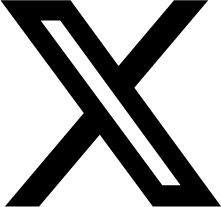August 2025
Possibility of Corporate Intentional Tort Liability: Observations from Taiwan Supreme Court Judgment (2024) Tai Shang Zi No. 1586
In Taiwan’s judicial practice, following the unified interpretation rendered through the consultative procedure in Supreme Court Judgment (2019) Tai Shang Zi No. 2035, it has been clearly affirmed that a corporation may be directly subject to liability for its own tortious acts under Article 184 of the Civil Code. In other words, when a victim claims damages against a corporation, it suffices to prove that the corporation itself bears fault (e.g., breach of organizational duties), without the need to prove that the corporation’s representative or employee has committed a tort.
Subsequently, in Supreme Court Judgment (2019) Tai Shang Zi No. 1499, the Court further held that where a victim cannot identify and prove the specific perpetrator within the corporate organization and the content of such perpetrator’s act—thus making it impossible to establish joint tort liability under Article 185 of the Civil Code between the corporation and a specific employee—then, based on the principle of good faith, the corporation may not defend itself by arguing that the victim failed to claim damages from the employee, so as to invoke the statute of limitations defense for that employee’s share of joint liability.
More recently, the Supreme Court Judgment (2024) Tai Shang Zi No. 1586 further explored and appeared to recognize the possibility of “corporate intentional tort liability.” This view extends a company’s duty of organization and management toward its employees to the level of intent. When considered together with provisions such as Article 51 of the Consumer Protection Act, Article 13 of the Trade Secrets Act, Article 97 of the Patent Act—which all allow for treble to quintuple damages for intentional infringement—and Article 88 of the Copyright Act, which increases statutory damages for intentional infringement, the potential impact on the scope of corporate liability and governance requirements is substantial. This article analyzes the reasoning and implications of this judgment.
I. Case Background
The plaintiff, Company A, is a publisher of online educational learning resources. It alleged ownership of the literary and sound recording copyrights for the Scott Foreman Reading Street ELL Readers series of children’s English learning materials (“Disputed Materials”), first published in 2008.
The defendant, Company B, operates the “Hitutor” language learning website. Company A alleged that between 2013 and 2018, Company B’s employees, without authorization, reproduced 90 books (Grades 1 to 3) of the Disputed Materials—both literary and audio works—and stored them in Hitutor’s server database. These works were catalogued by unit, uploaded to the website, and made available for students to view, download, and print—thus infringing Company A’s reproduction and public transmission rights.
Given the difficulty of proving actual damages, Company A relied on Article 88(3) of the Copyright Act and claimed damages for 180 infringing acts (90 literary works + 90 sound recordings) at NT$20,000 per act, seeking NT$3.6 million in joint damages from Company B and its responsible person.
II. Lower Court’s Holding
The lower court found that Company B indeed used the Disputed Materials by having its employees reproduce and upload them to the Hitutor platform, thus constituting acts of reproduction and public transmission under the Copyright Act.
Given that Company B had a registered capital of NT$300 million and paid-in capital of over NT$140 million, and that its primary business involved one-on-one and group-based online foreign language instruction, it could easily access and recognize the Disputed Materials. Company B’s awareness of copyright issues should have been above that of an ordinary person. Therefore, in operating its online teaching platform and using teaching materials, Company B owed a higher duty of care to verify the lawful source of such materials to avoid infringing others’ copyrights.
By failing to exercise this heightened duty and allowing employees to reproduce and upload the Disputed Materials for members’ use, Company B was grossly negligent.
III. Supreme Court’s Reasoning
The Supreme Court first noted that Article 184 of the Civil Code applies to corporations; therefore, the special tort provision of Article 88(1) of the Copyright Act also applies to corporations without exception. Moreover, under Article 88(3) of the Copyright Act, whether an infringer acted intentionally or negligently affects the calculation of damages, thus making such distinction necessary.
Based on the evidence, the Court observed that Company B appeared aware that the Disputed Materials were unauthorized. Some materials had prompted cease-and-desist letters from other publishers and were taken down in response. The company had even inquired with in-house counsel about possible infringement. Given its scale and business scope, Company B could easily identify and access the works, and, as a professional language teaching platform, bore transactional safety and organizational duties regarding the legality of its teaching materials. The extent of breach of these duties could be relevant in assessing intent.
The Court emphasized the need to examine:
1. Duration of infringement (1 year and 9 months)
2. Whether any legality review was conducted regarding the materials
3. Whether the company had any internal unit, personnel, or mechanism responsible for periodic legality reviews of teaching materials
A comprehensive assessment of these factors could determine whether Company B’s lack of organizational management amounted to knowledge and intent to cause the infringement—or at least foresight of its occurrence without opposing such outcome—thus meeting the standard for intentional tort.
IV. Conclusion
The Supreme Court Judgment (2024) Tai Shang Zi No. 1586 marks the first explicit consideration of “corporate intentional tort liability” in Taiwan. It indicates that where a corporation bears heightened transactional safety and organizational duties, courts should assess multiple factors—timing of infringement, pre-emptive legality reviews, post-incident responses, and internal compliance mechanisms—to determine whether the corporation knowingly and willingly caused the infringement, or at least foresaw it and accepted the result. In such circumstances, the corporation may be found directly liable for an intentional tort.
Subsequently, in Supreme Court Judgment (2019) Tai Shang Zi No. 1499, the Court further held that where a victim cannot identify and prove the specific perpetrator within the corporate organization and the content of such perpetrator’s act—thus making it impossible to establish joint tort liability under Article 185 of the Civil Code between the corporation and a specific employee—then, based on the principle of good faith, the corporation may not defend itself by arguing that the victim failed to claim damages from the employee, so as to invoke the statute of limitations defense for that employee’s share of joint liability.
More recently, the Supreme Court Judgment (2024) Tai Shang Zi No. 1586 further explored and appeared to recognize the possibility of “corporate intentional tort liability.” This view extends a company’s duty of organization and management toward its employees to the level of intent. When considered together with provisions such as Article 51 of the Consumer Protection Act, Article 13 of the Trade Secrets Act, Article 97 of the Patent Act—which all allow for treble to quintuple damages for intentional infringement—and Article 88 of the Copyright Act, which increases statutory damages for intentional infringement, the potential impact on the scope of corporate liability and governance requirements is substantial. This article analyzes the reasoning and implications of this judgment.
I. Case Background
The plaintiff, Company A, is a publisher of online educational learning resources. It alleged ownership of the literary and sound recording copyrights for the Scott Foreman Reading Street ELL Readers series of children’s English learning materials (“Disputed Materials”), first published in 2008.
The defendant, Company B, operates the “Hitutor” language learning website. Company A alleged that between 2013 and 2018, Company B’s employees, without authorization, reproduced 90 books (Grades 1 to 3) of the Disputed Materials—both literary and audio works—and stored them in Hitutor’s server database. These works were catalogued by unit, uploaded to the website, and made available for students to view, download, and print—thus infringing Company A’s reproduction and public transmission rights.
Given the difficulty of proving actual damages, Company A relied on Article 88(3) of the Copyright Act and claimed damages for 180 infringing acts (90 literary works + 90 sound recordings) at NT$20,000 per act, seeking NT$3.6 million in joint damages from Company B and its responsible person.
II. Lower Court’s Holding
The lower court found that Company B indeed used the Disputed Materials by having its employees reproduce and upload them to the Hitutor platform, thus constituting acts of reproduction and public transmission under the Copyright Act.
Given that Company B had a registered capital of NT$300 million and paid-in capital of over NT$140 million, and that its primary business involved one-on-one and group-based online foreign language instruction, it could easily access and recognize the Disputed Materials. Company B’s awareness of copyright issues should have been above that of an ordinary person. Therefore, in operating its online teaching platform and using teaching materials, Company B owed a higher duty of care to verify the lawful source of such materials to avoid infringing others’ copyrights.
By failing to exercise this heightened duty and allowing employees to reproduce and upload the Disputed Materials for members’ use, Company B was grossly negligent.
III. Supreme Court’s Reasoning
The Supreme Court first noted that Article 184 of the Civil Code applies to corporations; therefore, the special tort provision of Article 88(1) of the Copyright Act also applies to corporations without exception. Moreover, under Article 88(3) of the Copyright Act, whether an infringer acted intentionally or negligently affects the calculation of damages, thus making such distinction necessary.
Based on the evidence, the Court observed that Company B appeared aware that the Disputed Materials were unauthorized. Some materials had prompted cease-and-desist letters from other publishers and were taken down in response. The company had even inquired with in-house counsel about possible infringement. Given its scale and business scope, Company B could easily identify and access the works, and, as a professional language teaching platform, bore transactional safety and organizational duties regarding the legality of its teaching materials. The extent of breach of these duties could be relevant in assessing intent.
The Court emphasized the need to examine:
1. Duration of infringement (1 year and 9 months)
2. Whether any legality review was conducted regarding the materials
3. Whether the company had any internal unit, personnel, or mechanism responsible for periodic legality reviews of teaching materials
A comprehensive assessment of these factors could determine whether Company B’s lack of organizational management amounted to knowledge and intent to cause the infringement—or at least foresight of its occurrence without opposing such outcome—thus meeting the standard for intentional tort.
IV. Conclusion
The Supreme Court Judgment (2024) Tai Shang Zi No. 1586 marks the first explicit consideration of “corporate intentional tort liability” in Taiwan. It indicates that where a corporation bears heightened transactional safety and organizational duties, courts should assess multiple factors—timing of infringement, pre-emptive legality reviews, post-incident responses, and internal compliance mechanisms—to determine whether the corporation knowingly and willingly caused the infringement, or at least foresaw it and accepted the result. In such circumstances, the corporation may be found directly liable for an intentional tort.




